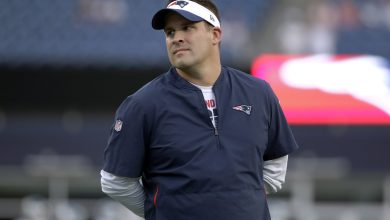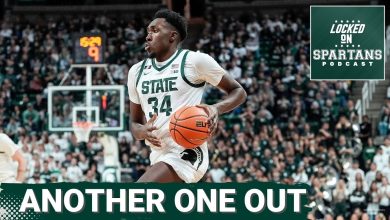Mike Elko, Texas A&M coach, warns NIL and transfer portal could cause long-term damage to college football’s structure.

Mike Elko, the head coach of Texas A&M, has raised significant concerns about the evolving landscape of college football, particularly the long-term impact of the NIL (Name, Image, and Likeness) policies and the widespread use of the transfer portal. Both of these developments, while bringing newfound opportunities and freedoms for college athletes, also pose potential challenges and risks to the long-term stability and integrity of college football. In his recent remarks, Elko warned that these changes could cause irreversible damage to the sport’s structure, creating a scenario where traditional team-building strategies and loyalty to programs might become increasingly difficult to maintain.
Understanding the Context: The Rise of NIL and the Transfer Portal
Before diving into Elko’s concerns, it’s important to understand the two central factors that are driving the changes in college football: NIL and the transfer portal.
NIL: The Freedom to Profit from Name, Image, and Likeness
The NIL rule, implemented in July 2021, allows college athletes to profit from their name, image, and likeness. This represents a massive shift from previous NCAA policies, which prohibited athletes from receiving compensation for anything other than their scholarships. Now, athletes are able to sign endorsement deals, earn money from social media, promote products, and even create their own businesses.
On the surface, the NIL is seen as a victory for athletes, who can now profit from the fame they generate through their college careers. For example, athletes in high-profile sports like football and basketball at major universities can attract significant attention from advertisers and brands. However, there is a growing concern that this newfound freedom could cause a disruption in the competitive balance of college football. With large programs having greater financial resources, they are in a better position to offer NIL deals, potentially leading to a “pay-to-play” system where athletes choose schools based on financial incentives rather than traditional factors like team culture, coaching, or academics.
Transfer Portal: Freedom to Move and Seek Better Opportunities
Similarly, the transfer portal has allowed athletes to switch schools more freely than ever before. Previously, transferring required a player to sit out a season, but the portal has given athletes the ability to transfer without facing this penalty. While this offers athletes more flexibility and control over their careers, it has also led to an increase in player movement. Coaches often find themselves dealing with a rotating roster, which can make it difficult to build long-term team cohesion and stability.
Mike Elko’s Concerns About Long-Term Damage
Mike Elko’s concerns revolve around the consequences these two factors might have on the sport in the future. In an interview or press conference (depending on the specifics), Elko raised several key points about how the NIL and transfer portal could create long-term damage to the foundation of college football.
1. Disruption of Competitive Balance
Elko’s first major concern is the disruption to the competitive balance of college football. Under the current system, wealthier programs and schools in bigger markets have the resources to offer more lucrative NIL deals to top athletes. This could lead to a situation where the richest programs continually dominate the recruitment process, leaving smaller schools with fewer opportunities to compete at a high level.
In theory, schools like Texas A&M, Alabama, and Ohio State, with their massive football budgets and powerful alumni networks, would have an advantage in attracting top talent because they can afford to offer larger NIL contracts. Smaller programs, on the other hand, may struggle to compete for these athletes, which could exacerbate the existing divide between the “haves” and “have-nots” in college football. Elko’s fear is that, over time, this imbalance could create a situation where only a small number of elite programs consistently dominate, undermining the competitive nature of the sport.
2. Decline of Loyalty and Team Culture
Another significant concern that Elko raised is the potential erosion of team loyalty and culture. Historically, college football has been built on the idea of developing athletes over a multi-year period, where players bond with teammates and coaches, and where their commitment to the team is driven by more than just financial incentives.
With the advent of the transfer portal, players can now leave a program at any time to pursue what they perceive as a better opportunity. This has led to a more mercenary approach to college football, where athletes may transfer for immediate playing time, higher NIL deals, or a more successful program. While player mobility can have some benefits, Elko believes that it could lead to a loss of continuity within teams, making it harder to build the strong cultures that have historically defined successful programs.
When players move frequently between programs, the bonds that are created through shared experiences on and off the field are weakened. Coaches might find themselves in a constant cycle of rebuilding their roster, rather than focusing on long-term development and cohesion. This can affect everything from team chemistry to leadership development, which are critical components of a successful football program.
3. Impact on Coaching and Recruiting
Elko also pointed out that the changing dynamics in recruiting and roster management could make life more difficult for coaches. The ability for players to move so freely through the transfer portal means that coaches must now not only focus on recruiting high school athletes but also on managing a constantly shifting roster of transfers. This requires additional time, effort, and resources, potentially distracting from the core mission of building a cohesive and competitive team through traditional methods.
In addition, the recruiting process is now more complicated due to the rise of NIL. College coaches must be prepared to navigate a landscape where athletes are making decisions based not only on playing time and potential for success but also on financial considerations. While some argue that athletes should be able to profit from their NIL rights, coaches like Elko worry that the financial aspect could overshadow other, more traditional factors in player recruitment. This could result in a situation where athletes are increasingly making choices based on the highest bidder, rather than on the long-term development that a program offers.
4. The Risk of a “Wild West” Scenario
A more existential worry that Elko raised is the risk of college football becoming a “Wild West” scenario, where schools and coaches are scrambling to keep up with the latest trends in NIL deals and roster management. Without strong regulations or a cohesive strategy to govern these changes, there is potential for chaos. This could lead to unscrupulous behavior, such as under-the-table payments to recruits, an increase in tampering between schools, or the prioritization of short-term financial gains over long-term player development.
Elko’s fear is that without appropriate safeguards, the system could become overrun by agents, third parties, and even external entities looking to take advantage of young athletes. In such a scenario, the core values of college football — teamwork, development, and education — could be overshadowed by business interests. This would not only harm the integrity of the sport but also negatively impact the athletes, who might find themselves caught in a system that is primarily focused on their commercial value rather than their personal growth.
5. Long-Term Structural Instability
Finally, Elko cautioned that if these issues are not addressed, they could lead to long-term structural instability within college football. Programs might find themselves unable to compete financially, and the sport could see a further division between the wealthiest programs and those that struggle to keep up. Smaller schools and mid-tier programs could be left behind, unable to provide the same level of financial incentive through NIL deals or attract top talent due to lack of resources. This could lead to a scenario where college football becomes increasingly top-heavy, with a few powerhouse programs consistently winning championships while others fade into obscurity.
Furthermore, the lack of stability in rosters due to the transfer portal could have long-lasting effects on the competitive balance of college football. Without the ability to build continuity and consistency within teams, coaching staffs might find it harder to sustain success over time. A program that is constantly cycling through new players, many of whom have only short-term commitments, could find it difficult to build the kind of sustained excellence that is needed to remain competitive in the long run.
In conclusion, Mike Elko’s warnings about the NIL and transfer portal era reflect deep concerns about the long-term impact these changes could have on college football. While the changes provide new opportunities for athletes, they also introduce challenges that could undermine the sport’s competitive balance, team culture, and overall stability. Elko’s perspective underscores the need for thoughtful regulation and governance that takes into account the interests of athletes, coaches, and programs, while ensuring the integrity of the sport is preserved.
As college football continues to evolve in response to these new realities, it will be essential for the NCAA, conferences, and individual programs to work together to find solutions that maintain the sport’s competitive spirit and long-standing traditions. The goal should be to create an environment where athletes are treated fairly, while also protecting the foundation of the game itself. Without such efforts, the future of college football may indeed face irreversible changes, some of which could prove to be detrimental to the sport in the long run.









